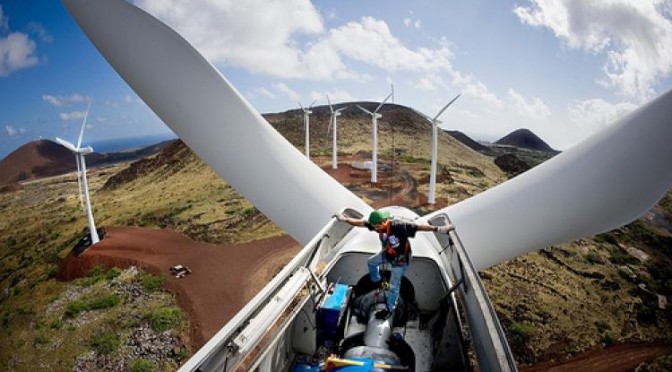The Latin American Energy Organization (OLADE) and the Global Wind Energy Council (GWEC) have published a joint report Competitive Processes for Financing Renewable Energy Projects.
The report provides a comprehensive overview and analysis of financing frameworks such as auctions and Power Purchase Agreements (PPAs) in key wind power markets in Latin America and the Caribbean and recommendations to continue accelerating renewable energy growth.
The report finds that 80 per cent of the current renewable capacity in Latin America and the Caribbean has been driven by public tenders and auctions, with PPAs playing an increasingly important role in driving down price and bringing in investors.
Stable, regular and technology specific auctions, as well as long-term USD-denominated PPA contracts are found to be the most effective in ensuring competitiveness and transparency in prices for renewable energy and ensure long-term sustainability of the industry.
Wind energy makes up the majority of renewable energy capacity in Latin America with over 29 GW installed as of December 2019.
Today, on the occasion of Mexico WindPower 2020, the Latin American Energy Organization (OLADE) and the Global Wind Energy Council (GWEC) have published a joint report Competitive Processes for Financing Renewable Energy Projects which found that over 80% of current renewable energy capacity in Latin America and the Caribbean has been driven by public tenders and auctions.
As one of the first reports of its kind, it provides a comprehensive overview and analysis of financing frameworks in key markets in Latin America and the Caribbean. The report provides deep insights into the financing mechanisms for renewable energy projects, such as auctions and Power Purchase Agreements (PPAs), that are currently in place throughout different markets in the region and provides recommendations on best practices for structuring these mechanism to continue accelerating renewable energy growth.
Alfonso Blanco, Executive Secretary at OLADE commented: “Renewable energy has been growing exponentially in Latin America and the Caribbean over the past decades thanks to auctions. While there is no one-size-fits-all solution for financing mechanisms as they must be adapted to local context, through this study we have found key elements that can help ensure that and auction or PPA market is successful. For example, building auctions that are technology specific as well as PPA contracts that are long-term and done in USD can help ensure healthy competition, secure interest from bidders, and create transparency and stability for investment levels and market size. Creating the right financing frameworks for renewables is key to ensure socioeconomic benefits and a cost-effective decarbonisation of our energy systems, and we are confident that the findings in this report can provide a roadmap for countries across the region to accomplish this.”
Ben Backwell, CEO at GWEC, said: “The transition from Feed in Tariffs (FiTs) to auctioning has been a major turning point in many markets to help lower the levelised cost of energy (LCOE) of renewable energy through heightened competition and price transparency. This has been clearly demonstrated in Latin America and the Caribbean where we see some of the lowest prices globally for both wind and solar, with the average price for wind decreasing by 46 per cent in average across the region since 2016 when we saw a surge in auctions. However, in order for auctions to work and sustain growth long-term, there must be a level of certainty and regularity to preserve industry and investor confidence in the market”.
“We also see PPAs playing an increasingly important role in driving renewable energy growth in Latin America and the Caribbean, but similar to auctions, the PPA market will require a long-term vision in order to continue to create transparent and low prices for renewable energy projects and attract investors. If we can get both these financing mechanisms right, we forecast that 70GW of wind energy capacity could be installed by 2030 in the region, representing 12 per cent of total electricity capacity”, he added.
The report explores the financing mechanisms in place in Argentina, Brazil, Chile, Colombia, Costa Rica, El Salvador, Guatemala, Jamaica, Mexico, Panama, Peru, and Uruguay.


